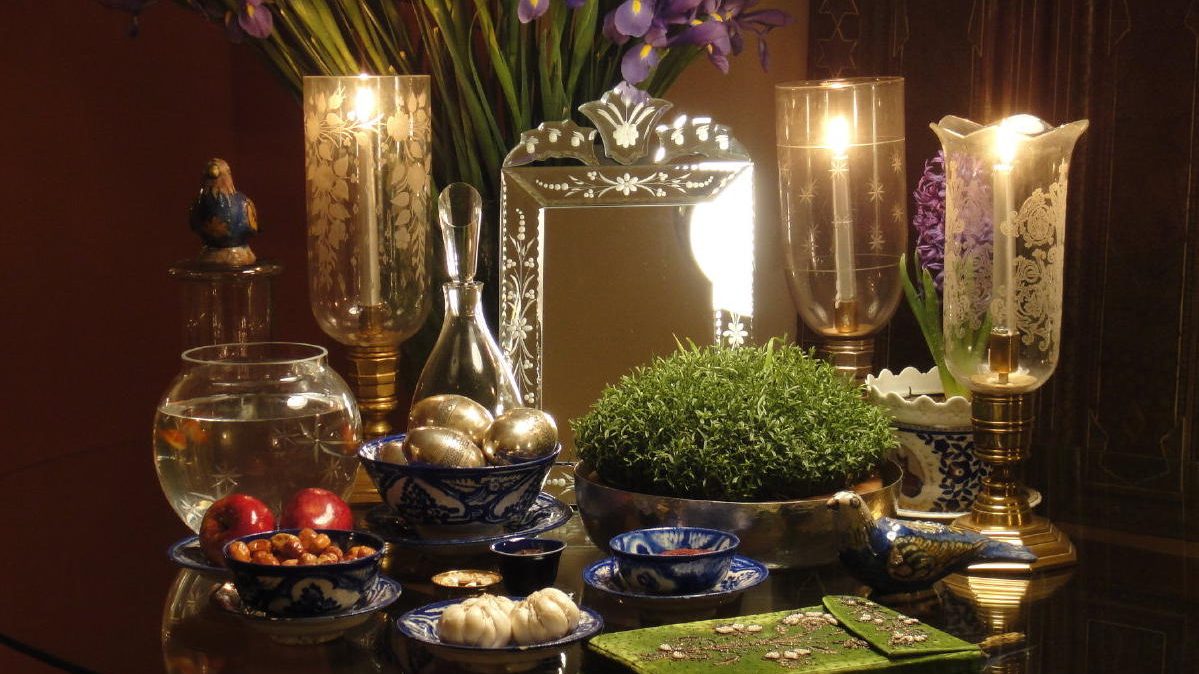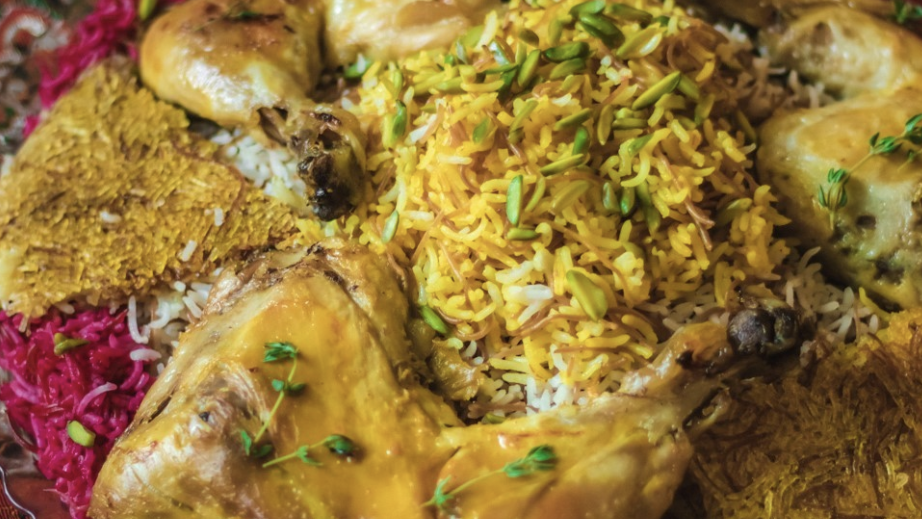Nowruz Feast: 6 Authentic Persian Dishes for Celebrating the New Year
Nowruz, the Persian New Year, is a time of renewal, joy, and culinary delights that have been cherished for centuries. As seasoned travelers with a penchant for authentic experiences, we’ve journeyed through Iran’s bustling cities and serene villages to immerse ourselves in the rich tapestry of Nowruz celebrations. This festival, marking the vernal equinox, is not just a change of seasons but a profound cultural event steeped in history and tradition.

Understanding Nowruz: The Persian New Year
Nowruz, which translates to “new day,” heralds the arrival of spring and is celebrated by millions worldwide, especially in Iran. Its origins trace back over 3,000 years to the ancient Zoroastrian tradition, symbolizing rebirth and the triumph of light over darkness.
The festivities commence with thorough house cleanings, known as “shaking the house,” symbolizing a fresh start. Families adorn their homes with the Haft-Sin table, featuring seven items beginning with the Persian letter ‘S,’ each embodying concepts like rebirth, health, and prosperity.

Persian vs. Iranian: A Cultural Clarification
The terms “Persian” and “Iranian” are often used interchangeably, but they hold distinct connotations. “Persian” traditionally refers to the ethnic group native to the region of Persia, primarily those who speak the Persian language (Farsi) and share specific cultural practices.
“Iranian,” on the other hand, is a broader term encompassing all citizens of Iran, a country rich in ethnic diversity, including Azeris, Kurds, Lurs, and more. This distinction is crucial in appreciating the multifaceted cultural landscape of Iran.
During Nowruz, specific dishes take center stage, each with deep cultural significance. Here are six quintessential Nowruz dishes:
The Food of Nowruz: 6 Authentic Dishes

1. Sabzi Polo ba Mahi (Herbed Rice with Fish)
Sabzi Polo ba Mahi is a cornerstone of the Nowruz feast. The dish features basmati rice mixed with a medley of fresh herbs—parsley, dill, cilantro, and fenugreek—served alongside fried or baked fish, symbolizing life and prosperity.
The tradition of pairing fish with herb-infused rice dates back centuries, rooted in the symbolism of fish representing life and the herbs signifying the renewal of nature. This combination embodies the essence of Nowruz: rejuvenation and abundance. The meticulous preparation of Sabzi Polo, with its fragrant layers and golden tahdig (crispy rice crust – listen to Cerca‘s episode of MisInfoNation about Iran and the hilarious exchange about tahdig), reflects the Iranian emphasis on culinary artistry and hospitality.
Where to Experience It:
Tehran: Gilaneh Restaurant offers an authentic Sabzi Polo ba Mahi, capturing the traditional flavors of the Caspian region.
Los Angeles: Shamshiri Grill in Westwood serves a renowned version of this dish, reflecting the rich Persian culinary heritage.

2. Kuku Sabzi (Herb Frittata)
Kuku Sabzi is a vibrant herb frittata, dense with parsley, cilantro, dill, and spinach, bound together with eggs and often enriched with walnuts and barberries. It’s typically served as an appetizer or light meal during Nowruz festivities.
This dish epitomizes the Iranian affinity for herbs and greens, symbolizing rebirth and the lushness of spring. Kuku Sabzi’s simplicity and reliance on fresh produce highlight the agrarian roots of Persian cuisine and the celebration of nature’s bounty during Nowruz.
Where to Experience It:
Isfahan: Shahrzad Restaurant is famed for its traditional Kuku Sabzi, offering a taste of authentic Persian home cooking. It houses a collection of Iranian art as well, making it feel like a gallery restaurant.
Toronto: Takht-e Tavoos presents a delightful brunch menu featuring Kuku Sabzi, reflecting the diverse Iranian diaspora’s culinary traditions.
Los Angeles: Attari Sandwich Shop has a cult following in LA and serves a deeply verdant Kuku Sabzi style wrap.

3. Reshteh Polo (Noodle Rice)
Reshteh Polo combines rice with toasted noodles, often accompanied by tender meat, raisins, and dates. The noodles are believed to symbolize the threads of life and destiny, making this dish particularly significant during Nowruz.
The integration of noodles into Persian cuisine showcases historical interactions along the Silk Road, with reshteh (noodles) symbolizing life’s pathways. Serving Reshteh Polo during Nowruz is a culinary wish for success and good fortune in the coming year, intertwining sustenance with cultural metaphor.
Where to Experience It:
Shiraz: Haft Khan Restaurant offers a sumptuous Reshteh Polo, blending tradition with culinary excellence.
London: Kateh Restaurant provides a contemporary take on Reshteh Polo, reflecting the dish’s enduring appeal.

4. Ash Reshteh (Noodle and Bean Soup)
Ash Reshteh is a hearty soup brimming with herbs, legumes, and noodles, garnished with kashk (fermented whey) and fried onions. It’s a staple during Nowruz, offering warmth and comfort.
Ash Reshteh has been a cornerstone of Persian cuisine for centuries, often associated with communal cooking and sharing. The soup’s rich amalgamation of ingredients represents unity and the intertwining of community bonds, aligning with Nowruz themes of togetherness and renewal.
Where to Experience It
Tabriz: Haj Ali Chelokababi is renowned for its traditional Ash Reshteh, offering an authentic taste of this beloved soup. (386Q+24F, Tabriz, East Azerbaijan Province, Iran)
Los Angeles: Maral Cuisine serves a celebrated Ash Reshteh, bringing Persian comfort food
Melbourne: Persian Halal Restaurant serves both traditional dishes and takes a modern twist on others.

5. Samanu (Sweet Wheat Pudding)
Samanu is a rich and velvety pudding made from sprouted wheat, symbolizing power, patience, and abundance. It’s a staple on the Haft-Sin table and a revered dish in Nowruz celebrations.
Samanu’s roots stretch back over a thousand years to ancient Persia, where it was considered sacred due to its association with fertility and strength. Unlike other Persian desserts that often use sugar or honey, Samanu derives its natural sweetness solely from the wheat germ, making it a deeply traditional and healthy offering.
The preparation of Samanu is a communal activity, typically made in large batches with women gathering to stir the pot for hours, singing traditional songs and sharing stories. This reflects a spirit of togetherness and the importance of patience—qualities valued during Nowruz.
For an authentic experience, try making Samanu at home or attending a Samanu-cooking gathering, where you’ll witness the slow transformation of wheat into a silky, caramel-like pudding.
Where to Experience It
Mashhad: Mozaffari Traditional Restaurant a beautifully appointed traditional restaurant with a separate coffee/tea bar situated in an old neighborhood house.
San Francisco: Lavash Persian Cuisine serves an authentic version during Nowruz celebrations.
Sustainable Travel Tip
Samanu is a zero-waste dish, using only wheat and water. If you’re traveling and wish to participate in its preparation, look for sustainable food workshops that emphasize traditional and regenerative food practices.

6. Shirini Nowruz (Persian New Year Sweets)
No Nowruz feast is complete without an assortment of Shirini Nowruz, or Persian sweets. These include delicate Nan-e Nokhodchi (chickpea cookies), Baqlava, and Qottab (almond and cardamom pastries). Each treat represents the sweetness and joy of the new year.
History and Cultural Significance
Persian sweets date back to the Achaemenid Empire (550–330 BCE), where desserts were a luxurious offering at royal banquets. Many of the confections enjoyed during Nowruz today were once reserved for nobility, prepared with saffron, rosewater, and nuts.
Each region in Iran has its own variations of Nowruz sweets:
Yazd is famous for its delicate, flaky Baqlava.
Tabriz is known for Ghorabieh, a rich almond cookie.
Shiraz specializes in Masghati, a rosewater-scented Persian delight.
During Nowruz, it’s customary to visit friends and family, where hosts serve tea alongside these sweets as a gesture of hospitality.
Where to Experience It
Washington DC: Kandu Pastry find a local pop-up or order shipping.
Tehran: Fanoos Patisserie is renowned for its handcrafted Nowruz sweets.
Paris: Mazeh offers a selection of Persian desserts, along with a full, elevated Persian menu.